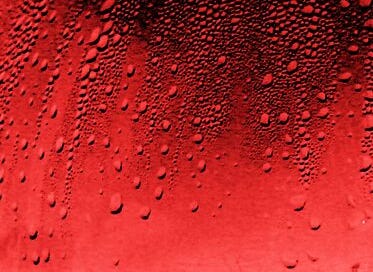Understanding the Causes, Effects, and Solutions to Protect Our Future
What is Acid Rain?
Acid rain refers to precipitation—rain, snow, sleet, or hail—that contains higher-than-normal levels of acidic components, such as sulfuric or nitric acid. This phenomenon occurs when pollutants, primarily sulfur dioxide (SO₂) and nitrogen oxides (NOₓ), are released into the atmosphere by industrial activities like burning fossil fuels, vehicle emissions, and power generation. These pollutants react with water vapor, oxygen, and other chemicals in the atmosphere to form acidic compounds. When this acidic mixture falls to the ground, it can significantly harm the environment, human health, and built structures.
How is Acid Rain Formed?
The process of acid rain formation involves a series of chemical reactions:
Emission of Pollutants: Sulfur dioxide (SO₂) and nitrogen oxides (NOₓ) are released into the atmosphere from sources such as coal-fired power plants, factories, and vehicles.
Atmospheric Transformation: These pollutants react with oxygen and water vapor in the atmosphere to form sulfuric acid (H₂SO₄) and nitric acid (HNO₃).
Precipitation: The acids mix with cloud moisture and eventually fall to the ground as acidic precipitation.
“Art for Oceans – because everything from the dry earth to the deepest seas is interconnected in the fight for our planet's future.”
The Damage Acid Rain Causes
Acid rain has widespread and devastating effects on ecosystems, human health, and the built environment:
Impact on Aquatic Ecosystems:
Acid rain lowers the pH levels of lakes, rivers, and streams, making the water more acidic.
This change disrupts aquatic ecosystems, killing fish, amphibians, and other organisms that cannot survive in such conditions.
Acidification also leaches aluminum from the soil, which further contaminates water sources and harms aquatic life.
Damage to Forests and Vegetation:
Acid rain weakens trees by leaching essential nutrients like calcium and magnesium from the soil.
It damages leaves and bark, reducing the ability of trees to photosynthesize and grow.
Entire forest ecosystems can suffer, affecting biodiversity and contributing to deforestation.
Harm to Human Health:
While acid rain itself does not harm humans directly, the pollutants that cause it—SO₂ and NOₓ—can lead to respiratory problems, including asthma and bronchitis.
Fine particulate matter formed from these pollutants contributes to poor air quality, causing serious health risks.
Destruction of Infrastructure:
Acid rain accelerates the decay of buildings, monuments, and vehicles.
Historic landmarks made of marble and limestone are particularly vulnerable, as acidic precipitation reacts with the calcium carbonate in these materials, causing them to erode.
“Art for Oceans – because the health of the land and sea is inseparably tied to the future of our planet."
What Can We Do to Reduce Acid Rain?
Addressing the problem of acid rain requires collective action at multiple levels:
Reduce Fossil Fuel Use: Transitioning to renewable energy sources such as solar, wind, and hydroelectric power can significantly cut emissions of SO₂ and NOₓ. For more information, explore the section titled Other Innovative Solutions to Combat Acid Rain.
Implement Emission Controls: Installing scrubbers in industrial smokestacks and adopting catalytic converters in vehicles can minimize pollutant output. For more information, explore the section titled Other Innovative Solutions to Combat Acid Rain.
Support International Agreements: Policies like the Clean Air Act in the United States and international treaties targeting emissions reductions have proven effective in mitigating acid rain.
Educate and Advocate: Raising awareness about acid rain and its consequences can inspire communities and governments to take action.
Other Innovative Solutions to Combat Acid Rain
While reducing fossil fuel consumption is a step in mitigating acid rain, there are several innovative solutions that can further help in reducing pollutants before they are released into the atmosphere.
These solutions include advanced cleaning tools, pollutant-negating devices, and chemical reactions undertaken before pollutants leave industrial plants.
Advanced Cleaning Tools
Nanoscrubbers: Emerging technology - Researchers have developed nanoscrubbers that can effectively remove harmful gases like hydrogen sulfide from industrial emissions. These nanoscrubbers use zinc oxide nanoparticles to adsorb gas molecules, significantly reducing their concentration and preventing them from contributing to acid rain.
Electrostatic Precipitators: These devices use static electricity to remove particulate matter from exhaust gases before they exit smokestacks. By charging particles and collecting them on oppositely charged plates, electrostatic precipitators can achieve over 99% removal efficiency for fine particulate matter.
Pollutant-Negating Devices
Catalytic Converters: Catalytic converters are used to reduce harmful emissions from vehicles and industrial processes. They use catalysts like platinum, palladium, and rhodium to speed up chemical reactions that convert pollutants into less harmful by-products, such as water vapour, carbon dioxide, and nitrogen gas.
Cyclone Separators: These devices use the principle of inertia (centrifugal forces) to remove particulate matter from flue gases. Dirty flue gas enters a chamber containing a vortex, where larger particles are thrown towards the walls and collected, leaving cleaned flue gas to exit.
Chemical Reactions
Hydrodesulfurization: This chemical process is used to remove sulfur from fossil fuels during refining. By converting sulfur into hydrogen sulfide, which is then transformed into solid sulfur or sulfuric acid, hydrodesulfurisation reducing sulfur emissions and curb pollution.
Selective Catalytic Reduction (SCR): This process uses ammonia to facilitate the conversion of nitrogen oxides (NOx) into nitrogen and water. SCR is a widely used technology highly effective in reducing NOx emissions from industrial plants and diesel engines. By injecting ammonia or urea into the exhaust stream, NOx is converted into harmless nitrogen gas and water, achieving high reduction efficiency.
Adoption of these technologies can contribute to a cleaner and more sustainable future.
Art and Advocacy
The "Art For Oceans: Acid Rain Litmus Globe Impression" serves as both a visual representation and a call to action. The design—depicting a globe with deep blue oceans contrasted by a burnt red landmass—symbolizes the stark consequences of unchecked pollution and climate change. By incorporating water droplets into the imagery, the artwork highlights the interconnectedness of water systems and the cascading effects of acid rain on land, oceans, and life itself.
This piece, part of the broader "Art For Oceans" series, aims to spark conversation about environmental stewardship and inspire collective action.
Through art, we can visualize the challenges our planet faces and galvanise efforts to secure a sustainable future for generations to come.
Take Action
Every individual has a role to play in reducing acid rain and its impacts. Opting for energy-efficient appliances, reducing vehicle emissions by carpooling or using public transport, and supporting policies that prioritise environmental protection all contribute to minimising the causes of acid rain.
Together, we can mitigate the effects of acid rain and work towards a healthier, more sustainable planet.
What innovative ideas can you contribute to help combat this universal challenge?
Resources and Further Reading
United States Environmental Protection Agency (EPA) - Acid Rain Program: https://www.epa.gov/acidrain
National Geographic - Acid Rain: Causes, Effects, and Solutions: https://www.nationalgeographic.com
World Health Organization (WHO) - Air Pollution and Health: https://www.who.int
To Raising Awareness, Fostering Innovation, and Building Fairer Energy-Efficient Solutions to Sustain Everyday Australians, Humanity, and Our Planet!
-Dianne
Requests
If you would like to explore my designs or are searching for a specific product that isn’t available in my shops, or if you would like to see an existing design on another product through my boutique collection or on platforms like Redbubble, please don’t hesitate to leave a comment or contact me directly with your request.
DM Designs is dedicated to bringing the full expression of you to life!
If you found this article beneficial, and would like to support my advocacy work, consider buying me a cup of coffee.
#ArtForOceans #waterconservation #acidrain #impressionism #advocacy








